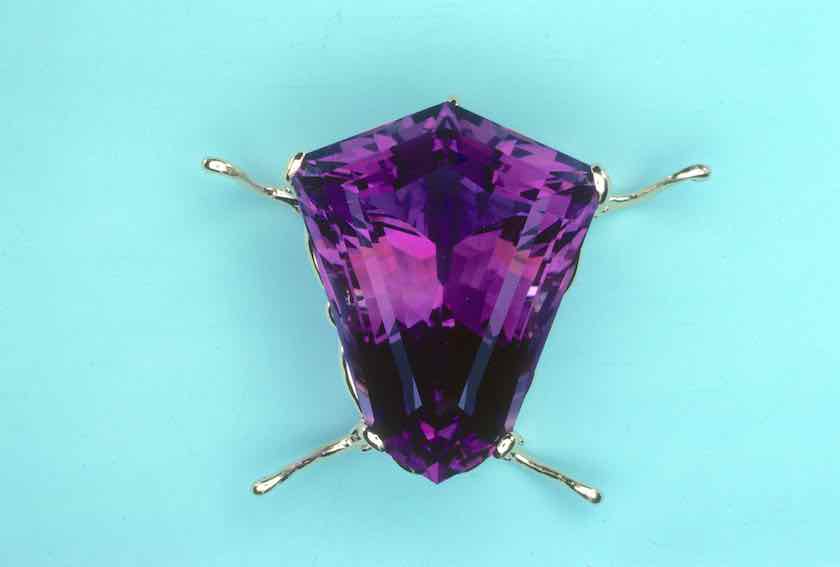The Foundation Stones of the New Testament
Commentaries on the foundation stones of the Book of Revelation influenced the development of the Western birthstone system. Learn more about this connection.
2 Minute Read
Answer: In the Bible, Revelation 21:19-20 lists twelve gemstones as the foundation stones of the Heavenly City. Over the centuries, like the stones of the breastplate of Aaron, these Biblical gems became associated with astrological signs and the months of the calendar. Although lists and translations vary, you'll find considerable overlap between the foundation stones and birthstones.
From Beautiful Gems to Foundation Stones
For millennia, people have marveled at the optical and physical properties of beautiful gems. Many people have even assigned supernatural properties to these stones. Today, the most common association between gems and mystical powers is the idea of birthstones.
This connection between gemstones and months in Western cultures probably originated with speculation about the stones of the breastplate of Aaron. In Exodus 28:15-21, the instructions God delivered to Moses included creating a breastplate of judgment, set with four rows of three stones. Scholars and gem enthusiasts have debated the actual identity of these twelve gemstones. Complicating matters, ancient names for gemstones don't necessarily correlate exactly with modern identifications.
In the 1st century CE, the historian Josephus linked the twelve stones of the breastplate of Aaron with astrological signs. As studies of Revelation increased over the centuries, the mineralogist and folklorist George F. Kunz notes that the foundation stones displaced the stones of the breastplate, in terms of popular association with astrological signs.
The Emergence of Birthstones
The belief emerged that wearing stones associated with these astrological signs would confer some benefit, and this association between gemstones and astrological signs carried over to the twelve calendar months. However, it wasn't until the 16th century in Poland that the idea of wearing a single stone that corresponded to your birth month emerged. The so-called traditional birthstone list developed during this time and spread to other countries. The modern list was developed in the United States in 1912 by the National Association of Jewelers.
The fundamental difference between the traditional and modern list is that the modern list contains only transparent gemstones. All the opaque traditional gems — bloodstone, pearl, sardonyx, opal, turquoise, and lapis lazuli — have been replaced. Jewelers also continue to add options to the modern list. For example, tanzanite as a December birthstone is a recent addition. Nowadays, jewelry enthusiasts choose freely between the traditional and modern lists.
The Foundation Stones Compared to Traditional and Modern Birthstones
You'll find the foundation stones identified and listed differently in various translations of Revelation. Below, I've presented what I think is the best available list.
| Month | Foundation Stones | Traditional//Modern Birthstones |
| January | Garnet | Garnet |
| February | Amethyst | Amethyst |
| March | Jasper | Bloodstone//Aquamarine |
| April | Diamond | Diamond |
| May | Emerald | Emerald |
| June | Agate | Pearl//Alexandrite |
| July | Turquoise | Ruby |
| August | Carnelian | Sardonyx//Peridot, Spinel |
| September | Chrysolite | Sapphire |
| October | Beryl | Opal//Tourmaline |
| November | Topaz | Topaz//Golden Topaz, Citrine |
| December | Ruby | Turquoise, Lapis Lazuli//Blue Zircon, Blue Topaz, Tanzanite |
Dr. Gerald Wykoff, GG CSM
Notes
- Sardonyx is a red and white variety of onyx, a type of chalcedony.
- Ancient references to chrysolite most likely indicate peridot. Until the 19th century, this name covered peridot as well as chrysoberyl, two distinct gem species. Gemologists no longer use this term.
- In modern gemology, beryl is a species of gemstone with numerous varieties, including emerald and aquamarine. According to Barnes' Notes on the Bible, the foundation stone "beryl" refers to a stone "identical to emerald" but green to blueish green in color. This could easily refer to aquamarine, which can range in natural color from a "sea foam green" to blueish green.
International Gem Society
International Gem Society
Related Articles
Recommendations for Polishing Silver Jewelry
Do Natural Rubies Fluoresce?
Can You Identify Gems Without Seeing Gemstone Colors?
Fake News in the Gem Trade: A Waterworn Emerald from Chivor?
Latest Articles
800 Years of Mogok: A Celebration in Tenuous Times
What is the Average Gemstone Faceting Yield?
Pyroxmangite Value, Price, and Jewelry Information
How to Identify Emerald Simulants and Synthetics
Never Stop Learning
When you join the IGS community, you get trusted diamond & gemstone information when you need it.
Get Gemology Insights
Get started with the International Gem Society’s free guide to gemstone identification. Join our weekly newsletter & get a free copy of the Gem ID Checklist!
